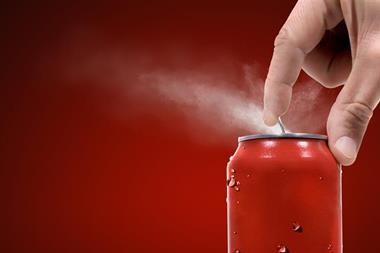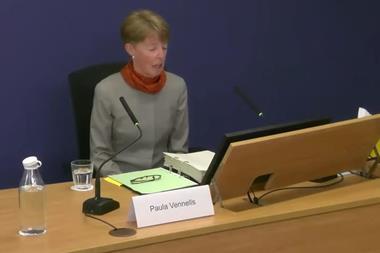Ben & Jerry’s sums up the Fairtrade ethos in a simple sentence. “It’s about making sure people get their fair share of the pie,” says Rhodri Morgan, brand manager for Ben & Jerry’s at Unilever UK. And what a sweet pie the Fairtrade market is. Fairtrade food grew 64% in 2010 to reach £749m, according to The Co-operative Bank’s 2010 Ethical Consumerism Report. And in September 2010, IGD reported that UK consumers led the European market with Fairtrade purchases, and that 31% of British shoppers expect to buy more Fairtrade produce in the future.
With appetising figures like these, why aren’t more convenience retailers willing to take their slice? Take John Mitchell a successful convenience retailer who owns two stores in Fife. He stocks some Fairtrade produce, including tea, coffee and confectionery, but claims he doesn’t celebrate Fairtrade Fortnight, or actively support Fairtrade in any way. “We’ve never really had demand from customers so it’s not a big area for us,” he admits.
Fingers on the pulse
It was in January 2010 that Nestlé launched Fairtrade- certified Kit Kat Four Fingers. “UK consumers are increasingly interested in the origins and sustainability of products and we are committed to improving conditions for Ivory Coast farmers to ensure a sustainable, high-quality supply of cocoa for our products,” says trade communications manager Graham Walker.
The Kit Kat Four Finger Fairtrade certification is in tandem with Nestlé’s global Cocoa Plan, which represents a £65m investment into programmes helping to address some of the key economic, social and environmental issues facing cocoa farming communities in the Ivory Coast.
It’s a view shared by many convenience retailers, and one that Brad Hill, Fairtrade strategic development manager at The Co-operative Group, is desperate to change. “You can’t just stick a Fairtrade mark on a product and expect it to sell,” he says. “There is a commercial case for Fairtrade, but consumers want to see it’s making a difference. Anyone involved in Fairtrade should be accountable for communicating to customers how they are making a difference.”
He concedes that the Co-op is in the privileged position of being able to advertise its Fairtrade work to illustrate to consumers the consequences of supporting the movement. However, he claims that independent retailers can also communicate the message without the need for a big budget. “Any small retailer can go on the Fairtrade Foundation website www.fairtrade.org.uk and find out how to get involved,” he says.
As part of its Show off Your Label campaign, the Foundation is urging retailers to be “loud and proud” about carrying the Fairtrade Mark during Fairtrade Fortnight, which runs from February 28 to March 13. The Foundation offers access to a wide range of colourful pos, which encourages consumers to ‘rave about your Fairtrade brazil nuts’ and ‘parade your Fairtrade coffee’. Material includes posters, banners and action guides.
“You can also encourage your staff to really get behind Fairtrade,” suggests Hill. “A store manager can take responsibility and make it happen. In the past we’ve been to schools and done assemblies and Fairtrade fruit tastings it’s a real opportunity for interacting with the community.”
Emma Cameron, people and marketing manager at Gravelle’s Budgens a chain of three stores in Cambridgeshire, Hertfordshire and Essex, also believes in getting involved. Last year the stores took part in the Fairtrade Foundation’s Big Swap campaign, where they got customers to switch a standard product in their trolley for a Fairtrade alternative. “We had loads of leaflets and created a Fairtrade window display,” she says.
For this Fairtrade Fortnight, Cameron is planning to embark on some community work. “This year I’ll be getting in touch with local schools to see if I can link up with their Fairtrade activity.”
Nisa-Today’s has been building up the number of Fairtrade lines it stocks and now offers members 80 such products. Central distribution category controller with responsibility for hot beverages, Rob Large, believes the move is in part due to pioneering brands such as chocolate firm Divine and Café Direct branching out with new variants. Big brand owners such as Nestlé and Cadbury switching to Fairtrade suppliers has also helped the movement no end.
Cadbury is pulling out all the stops this Fairtrade Fortnight and will put 20% of all profits from Fairtrade-certified Cadbury products sold during the period towards funding solar power projects in Ghanaian cocoa producing communities.
The activity will be supported by a six-figure marketing investment from Cadbury including digital, PR and in-store media. Cadbury trade communications manager Susan Nash says: “As well as helping the communities we work with in Ghana, the initiative is set to deliver some great results for retailers, too. We already know that sales of Fairtrade products increase by 20% during Fairtrade Fortnight and maintain improved performance afterwards, and 58% of people are more likely to buy Cadbury as a result of its Fairtrade certification. Retailers should ensure shoppers are aware of the promotion by clearly displaying the pos material during Fairtrade Fortnight.”
Ben and Jerry’s is another big brand that is fully behind Fairtrade. It launched its first Fairtrade ice cream in 2005, and by the end of this year its 58 flavours will be Fairtrade certified. Brand owner Unilever claims this is not only good news for the farmers who produce its raw materials, but also for the ice cream category as a whole. “Our commitment to Fairtrade will add further value to the category by driving customers’ loyalty to the range,” says Morgan.
Over the past year Unilever has invested £4m in a communications campaign to make sure that consumers know about Ben & Jerry’s Fairtrade initiative.
With plenty of big brands shouting about their good work, it’s time indies started getting vocal about Fairtrade. Indeed, with more key brands becoming Fairtrade certified, it’s likely your Fairtrade offering is growing of its own accord. So why not take the time to let consumers know, or better still use the Fairtrade message as a way of engaging with the community?
As the Co-op’s Hill says: “The amount of effort we put into communicating Fairtrade is just as important as the Fairtrade work itself in taking the movement forward into the mainstream.”




























No comments yet